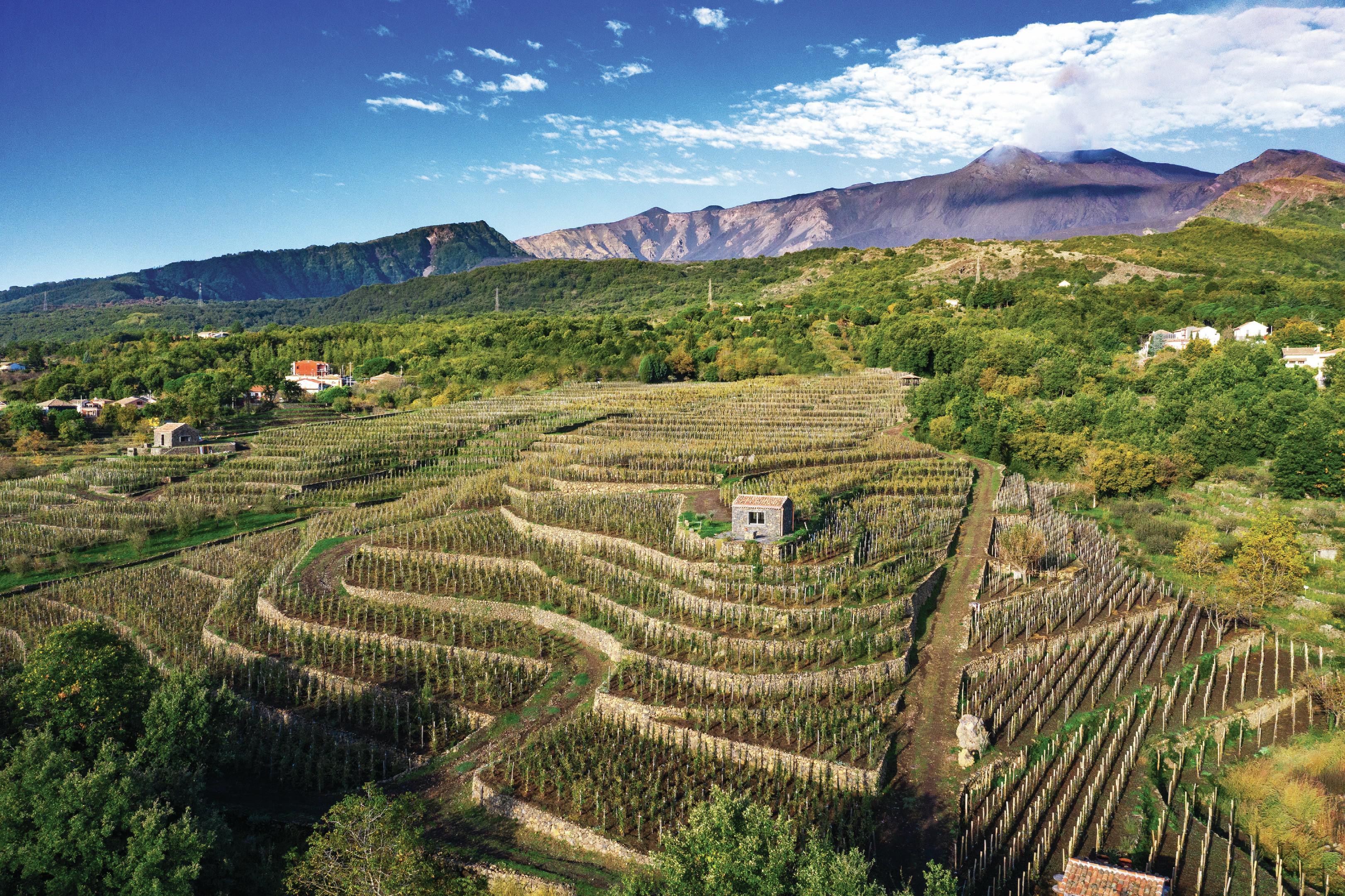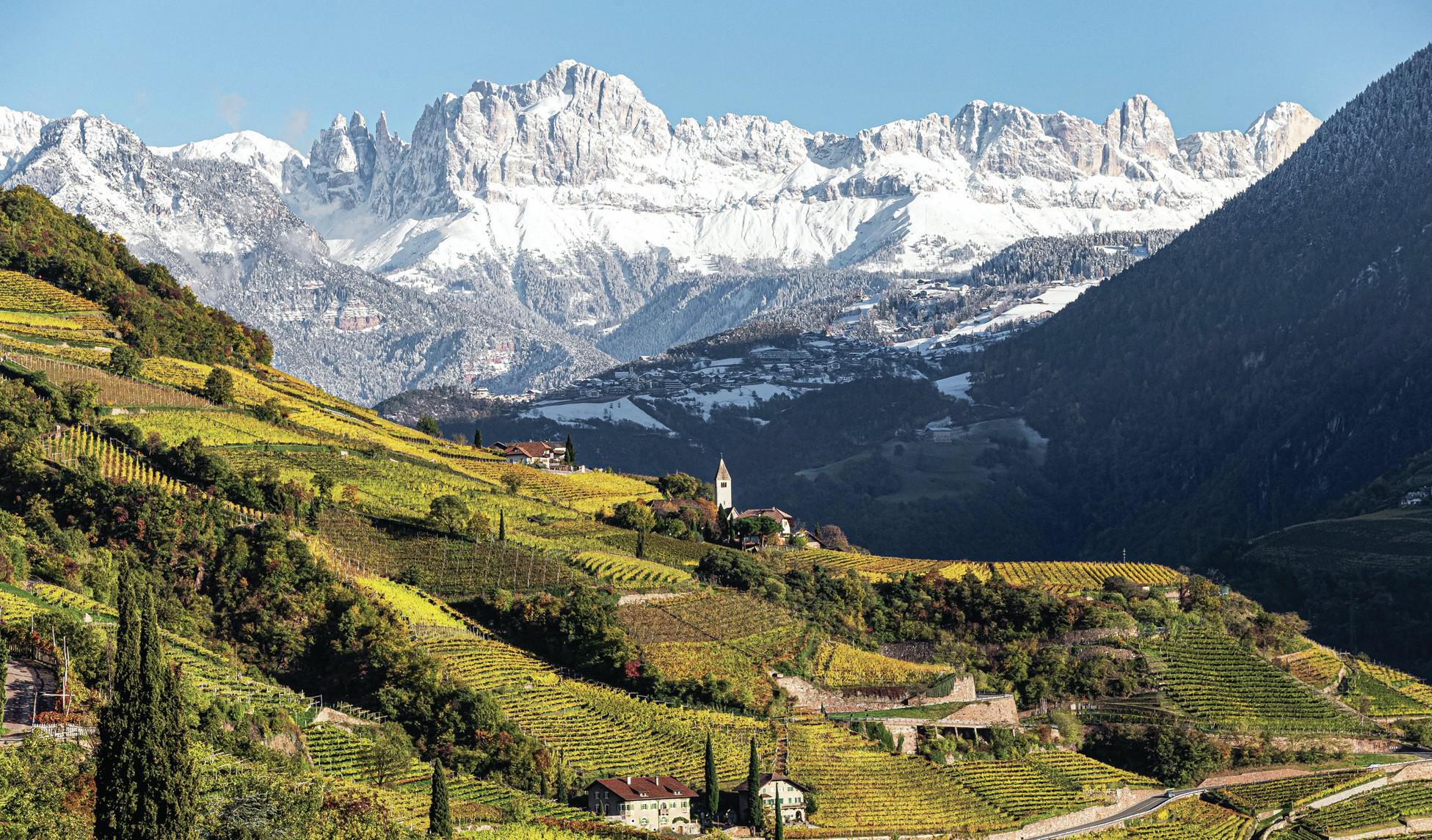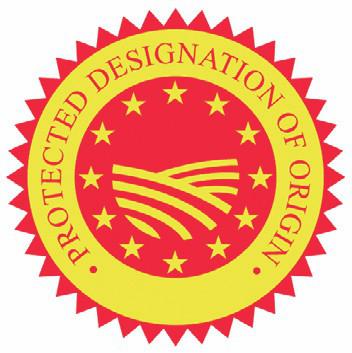This website uses cookies so that we can provide you with the best user experience possible. Cookie information is stored in your browser and performs functions such as recognising you when you return to our website and helping our team to understand which sections of the website you find most interesting and useful.
Alto Adige: promoting the sensual delights
Producers in the sub-Alpine valleys of Alto Adige have teamed up with winemakers on Etna to promote their artisan, terroir-driven wines.

Despite being some 1,400 kms apart by road and a small sea crossing, Sicily’s Mount Etna and Alto Adige in the north of Italy have joined forces in a new, three year promotional campaign, co-funded by the EU. ‘Europe for the Senses’ aims to inform consumers and the trade in Switzerland and the UK about these two fine wine regions together with Pecorino Romano DOP, the famous hard sheep’s cheese from Sardinia and Tuscany. The campaign which will include social media platforms, trade events and press trips, is also to highlight the importance of the appellation system of DOCs and PDOs. These designation of origin labels give producers protection from imitation and counterfeit products, and provide consumers with a guarantee of provenance and quality.
All but 2% of Alto Adige’s wine production is DOC, while Etna DOC was one of the earliest DOCs in Italy and the first in Sicily when it was founded in 1968. By the very nature of their terroir, both regions are committed to producing wines of the highest quality. The option to produce at scale from high-yielding, mechanised vineyards simply doesn’t exist within the confines of Alto Adige or on the slopes of Mount Etna.
Squeezed into its steep sub-Alpine valleys, Alto Adige is one of the smallest wine regions in Italy, and its DOC covers around 5,700 hectares tended by nearly 5,000 winegrowers. Planted in a wide range of different soils, the vines extend from 200m to 1000m above sea level. There is the protective wall of the Alps to keep out the damp, cooler conditions from the north, while warm air currents blow in from Lake Garda to give an almost Mediterranean influence to the southern part of Alto Adige. The region also has a long history of wine-making, one of the oldest in Europe, that dates back to pre-Roman times. During the Middle Ages, many of the vineyards belonged to the monasteries, while under the Habsburgs, particularly Archduke Johann (1782-1859), there was a move to plant Bordeaux and Burgundian varieties, along with Riesling for the first time.
In recent decades there has been a shift in favour of white wines which now account for almost two thirds of production, led by Pinot Grigio, Chardonnay, Pinot Blanc and Gewürztraminer. The latter has been a native grape here for a long time, and its elegant, aromatic wines are greatly revered by producers in Alto Adige. The most important red grapes are the indigenous Lagrein and Schiava/Vernatsch, along with Pinot Noir. In all, over twenty varieties are grown in the region, and the diversity of wines produced is amplified by the rich variety of soil types and the many different microclimates.

Funded by the European Union. Views and opinions expressed are however those of the author(s) only and do not necessarily reflect those of the European Union or the European Research Executive Agency (REA). Neither the European Union nor the granting authority can be held responsible for them.
Down in Sicily the island’s Mediterranean warmth is tempered by the cooling effect of altitude on Mount Etna, and this is especially true at night. The diurnal range can be as high as 20 25C giving real finesse and freshness to the wines. The eruptions of Europe’s most active volcano have created a fascinating mosaic of different volcanic soil types part sand, part gravel and part ash that give the wines their characteristic mineral quality. The terraced vineyards have been carved into the slopes of Etna up to 1000m above sea level.
Like Alto Adige, this eastern part of Sicily has very deep roots in viticulture that date back to the Ancient Greeks who are believed to have planted vineyards as early as the 8th century BC. By the 1880s the province of Catania had become the island’s biggest wine region with 90,000 ha. under vine, until it was hit by phylloxera in the early 1900s. Today the province of Catania has 4,000 ha of which Etna DOC accounts for just under 1,300 ha, currently farmed by 441 winegrowers to produce around 5.8 million bottles a year. In the last ten years alone, the surface and the number of winegrowers in the DOC has doubled. Etna DOC has been described as ‘an island within an island’, and not just because its wines are so unique from the rest of Sicily. While there are just two principal grape varieties – Nerello Mascalese for Etna Rosso, and Carricante for Etna Bianco, there are endless different expressions thanks to the varied terroir within the DOC.
The altitude and orientation of the vineyards, the type of volcanic soil and the levels of ventilation, temperature and rainfall are just some of the factors that make wines from the different ‘contrada’ or crus, so diverse. The style of wine is broadly determined by which of Etna’s four slopes it comes from. The coolest conditions are to be found on the northern slopes which are protected by the mountain ranges of Peloritani and Nebrodi, and here Nerello Mascalese dominates. To the east, where there is more exposure to the wind and rain blowing in from the Ionian Sea, the terraced vineyards extend to 900m, and the white grape Carricante is the most planted. To the south-east you will find old, bush-trained vines of
Nerello Mascalese and Carricante, while to the south-west, being furthest from the sea, the conditions are considerably drier. Here there are vineyards planted up to 1000m above sea level, and as well as Carricante, there are plantings of Etna’s other red grape, Nerello Cappuccio. The Consortium for the Protection of Etna Wines was established in 1994 to help protect, promote and add value to the entire appellation, and not just the producers affiliated to the Consortium. Its remit is to champion equitable and sustainable viticulture on Mount Etna, based on the knowledge that today progress needs to be social and ecological, and not just economic. Just like Alto Adige, Etna DOC will never be able produce at scale, and its low-yielding vineyards will always involve a lot of hard, manual labour. In other words, both regions are predicated to fine wine production, and this only benefits the environment. The elaborate care of the vines not only helps to enhance the quality of the grapes, it also helps protect the existing ecosystem and promotes biodiversity in the vineyard.


